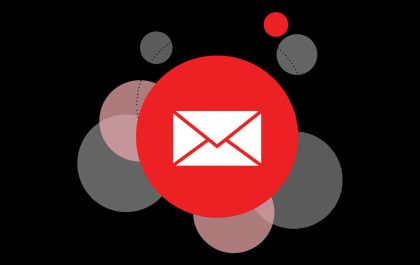Table of Contents
Introduction
Experience and Loyalty – Human interest is a soft science. What happens within an engaged mind that makes us want to watch the next episode, read the next chapter, or press the check-out button in a virtual cart is largely a mystery. Over years and years of digital marketing study, branding professionals and product designers have developed some theories and trends that help to engage a consumer audience. But understanding what it is within the user experience that causes a user to stay, engage, and further, to return, isn’t as easy as one might think.
The best product designers and marketing professionals understand that early premise: the mind is hard to understand. Instead of taking guesses and designing a virtual experience for an arbitrary consumer, the best in the industry spend more time asking questions, being curious, and knowing that they don’t know everything about their potential target audience. From that space of curiosity, innovation can begin. Following is an overview of three important steps at achieving customer engagement loyalty through user experience (UX) design.
Specificity is Key: The Art of User Personas
Advanced behavioral research goes into great product design. Now, the increased access to consumer data can help to direct some of the decisions marketing and branding teams are making as they carve a pathway to make their prospective consumers loyal customers. Mostly, the data and the behavioral research offers insights into the habits and preferences of large demographic and psychographic groups. And while those insights help, they’re normally not enough to build a large and loyal customer base of the long-term.
Instead, the best teams get into the ins and outs of realistic user personas. Creating a well-defined user persona that represents a single consumer in all of their personal complexity is the best way for teams to vet their digital experience as it resonates with individuals. Budgets and timelines can make this challenging, but consultants and experts can help to expedite the process. Developing user personas is a step that can’t be skipped in the competitive age of the 21st century digital arena.
Small Cues: Tone, Color, The Flow of Information
Experience and Loyalty – After extensive user persona research, teams can have an in-depth understanding of the consumers’ reasoning, their intrinsic motivations, their personal priorities and their aesthetic preferences. Those insights should form the base of all future aesthetic choices, from the colors used to the images displayed to the font-size, placement, tone, and quantity of written information.
User persona research might inform a branding team that consumers who are most likely to remain loyal to their brand are consumers with environmental awareness high on their list of priorities. From there, a comprehensive approach can be developed to touch on that cognitive sphere of all virtual messaging. Energizing primary colors, bold text with meaningful claims, and calls to action that represent a larger purpose might be the perfect way to engage the deeper motivations of those eco-conscious consumers.
Using a mix of locally sourced images and beautiful, natural views might put the consumer in the right headspace to make their decision. These small cues are available to consumers of all kinds, and the best virtual experiences take many user persona profiles into account when developing their aesthetic considerations.
From The Inside: Intrinsic Motivation for Customer Retention
On average, 50% of leads in any sales pipeline aren’t ready to buy, and 80% won’t ever convert into sales. That data is taken from traditional marketing and person-to-person sales. Imagine how much those numbers climb when it comes to digital viewers; it’s much easier to navigate to a website just to explore than to take a cold call from a salesperson or to casually saunter into a store. Appealing to a virtual consumer’s intrinsic motivation is therefore crucial in converting casual viewers into leads, and converting leads into actual sales.
A website that’s designed to answer to the intrinsic motivations of its users is always one that’s well-designed and easily navigated through. Clean home pages with large and obvious search bars help users of all digital literacies find the information they’re seeking.
Catchy but clear calls to action that say something both unique and easily understandable about the larger meaning of the brand are crucial in triggering the internalized motivations that drive consumers to take the next habitual step; to click to learn more, sign up for an email newsletter, or to navigate to that check-out screen. The degree to which product design teams can create a clear path for those habit-forming calls to action and their associated results will be the degree to which they’ll see success in converting and keeping their leads.
In short, the world of website development and virtual marketing is going beyond categorical research and considering the intrinsic motivation of individual consumers. With more time and resources spent at the research stage, product development and marketing teams can have a clearer understanding of the many consumer profiles who will come to their page.
Experience and Loyalty – From there, adjusting the aesthetics and the concrete infrastructure of the web experience in accordance with those consumers will create an experience that feels like the right fit and leads to the consumer’s digital return. Leads are one thing, loyalty is entirely another—with the above steps, companies can find, engage, and keep their loyal consumers.
About Kyle Mani
Kyle Mani is the founder and CEO of OWDT, an internationally acclaimed, award-winning web design and marketing company that offers a robust roster of design and development services. With industry-leading solutions in the realm of brand incorporation, digital experience architecture, and multi-disciplinary design, OWDT helps its clients realize conversions far beyond the industry average.
Related posts
Recent Posts
Best Practices for Cloud-Based Email Archiving Implementation
Best Practices for Cloud-Based Email Archiving Implementation Email archiving solutions were traditionally deployed on-premise, giving organizations total control over the…
GameStop Near Me West Virginia, United States
GameStop Near Me West Virginia, United States Are you looking for a GameStop near you? Don’t worry—you’ve found the right…

![Keep A User Coming Back: Experience and Loyalty [2024]](https://www.computertechreviews.com/wp-content/uploads/2022/04/How-to-Keep-A-User-Coming-Back-The-Link-Between-Experience-and-Loyalty-1200x675.jpg)

